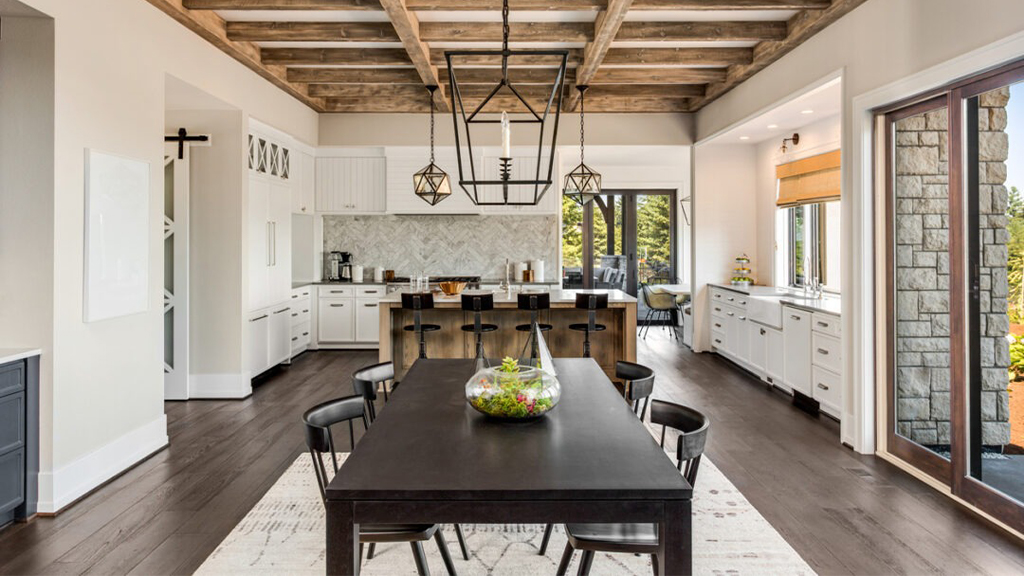While decorating your home is a highly individual art form, there are some design principles you should follow in order to be successful. These tips and tricks should get you started, whether you’re furnishing a newly renovated space or simply want to modernize an existing space.
1. Don't make rooms too themed.
We all have a favorite design era or style and we often take inspiration from that ‘look’ when trying to come up with a decorating concept for our own home. A common mistake, however, is to overdo this influence and make a room overly themed. It could be a stern appearance or a homage to Bali that is inappropriate and often out of place. Instead of taking things too seriously, consider using hues, artwork, or furniture that represent your favorite style and incorporate them into your decor along with other items. Even if it doesn’t turn into a theme park, you still get the style and vibe you want.

2. DON'T COLLECT CLUTTER!
Everyone has items that they love to display, whether they are souvenirs or travel memorabilia. Combined with gifts or your recent shopping spree, these items can create a messy look that easily takes up space. It not only looks chaotic, but also makes compact areas appear even smaller.
Editing your collectibles and reducing the number of things on display at one time is the key to success. If you have many sentimental possessions that you can’t part with, consider storing some away and rotating them over time like a museum does with its exhibits.
3. DO NOT BUY MATCHING FURNITURE SETS
It’s easy to make the mistake of buying your living room, dining room or bedroom furniture from a store as a complete suite. Even if they are all coordinated and have the same style, it can be boring and monotonous. Also, do you really want your home to resemble a catalog store front?
The secret is to invest in a bed or large three-seater sofa you love, then add flair with statement armchairs or nightstands in matching patterns. This creates a fascinating appearance that is unique to you.
4. Consider the architecture of your home
Make sure the design of your home matches your decorating style. Avoid forcing a sleek, contemporary aesthetic on a lavish Federation house; Instead, try to at least partially respect his story.
The same also applies to the place where you are located. Even if you like the look of coastal homes, their arid environment won’t suit them well. Accept where you are and let your surroundings influence your design style. 5. DO NOT DECORATE IN ONE COLOR
If you want your home to feel like a seaside retreat, avoid decorating in just one hue or assigning a specific color to a theme.
This can lead to not being able to identify your own color scheme as one hue or color concept may interfere with the other color characteristics.
There is a high probability that your room or house already has your color scheme “hidden”. First, examine the hues of your clothing and accessories, beloved furnishings, novels, pictures, and even memorabilia from your youth. It could be a piece of jewellery, a letter or any other item that you like.
6. CREATE A MOODBOARD
Create floor plans and mood boards for each area of the house, not the entire place. Although each area requires its own time and attention to work well with the overall plan, you can still see how they all work together.

7. Don't put all the furniture against the wall
Unless you live in a tiny house or apartment, don’t put all your furniture on the walls. Bring in components, give the walls some breathing room, and utilize the entire space. This improves the flow feel and allows for more flexible layout, which is crucial in open-plan houses.
8. MIX OLD AND NEW.
Add something that’s showing its age to the room, like an old clock, vintage candlesticks, or a weathered wooden bookcase, even if you prefer the look of brand new furniture. It keeps the space from feeling too identical.
9. DO NOT SELECT A MATCHING ACCESSORIES
Don’t choose too many identical accessories even if you want to give your house a consistent look. They should not be identical in height, shape, color or design. Get inventive by replacing all the square cushions with a round one and choosing vases of different heights, materials and shapes. The secret lies in the little variety.
10. Plan enough time.
There is no need to rush to complete the preparations. The rooms that have improved over time are the best.
In summary, decorating your home is an art that requires a balance between personal style, functionality and aesthetics. By following these do’s and don’ts, you can create a space that reflects your unique taste while providing a harmonious and comfortable environment.
Avoid going overboard with themed decorations and instead incorporate elements of your favorite style in moderation. Keep clutter out by carefully sorting and rotating your collectibles regularly to maintain a tidy and spacious appearance.
When choosing furniture, mix and match pieces to give them character and avoid the monotony of matching sets. Consider the architecture of your home and the surrounding area to ensure your design complements and enhances the existing space.
Utilize a diverse color scheme rather than focusing on a single hue or theme to create a cohesive and welcoming vibe. Create mood boards for individual areas of your home to enable effective planning while ensuring a coherent overall design.


